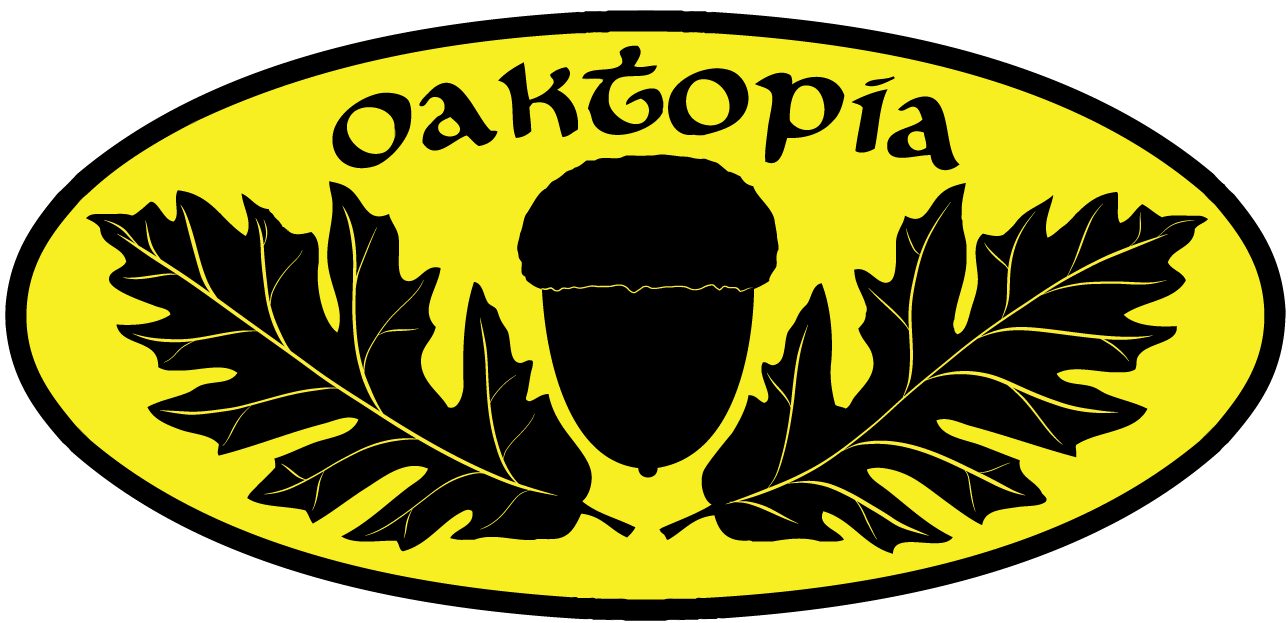Cork Oak
Quercus suber
The famous cork oak (Quercus suber) can be found in many locations in coastal California, with some specimens more than a century old. Particularly huge old cork oaks can be found in the wonderful, deep soils of Davis, but good examples can be found randomly distributed on good draining soils over much of the state.
Looking at these cork oaks scattered around California, several patterns stand out. First, cork oak tolerates tremendous heat, while also thriving in strongly maritime coastal climate zones like San Francisco and Santa Cruz. While many kinds of oaks are susceptible to powdery mildew or sooty mold in our maritime influenced climate zones, the leaves of cork oak resist leaf pathogens with a welcome consistency. The foliage is remarkably free of pests and diseases, but the soils all cork oaks grow on must have good drainage.
A second pattern that is very striking, and disturbing, is that old cork oaks typically show excellent root crown and trunk development, and are substantially sized trees with consistent good health. But looking at cork oaks planted in roughly the last 60 years, we see trees that are often stunted, with notable and unnatural swelling, and darkened bark, in the lower trunk. This unnatural flaring is strongly associated with circling and girdling roots present in young nursery stock. In the years after World War II, California universally adopted container nursery growing, citing the "convenience" of the growing method. At first, the containers were typically metal, with a transition to plastic over recent decades.
Unfortunately, the use of slick-wall containers is far from the natural growth environment for tree roots, and, nearly unavoidably, circling and girdling of the roots occurs, creating root defects. These defects live with the trees forever, ruining countless numbers of them. The adoption of slick-wall containers coincides with the decline of cork oak tree quality in the state. Some tree species, usually from wet summer climates, are able to "grow through" this circling and girdling, due to their ability to root graft, and can regrow a non-defective root system. But a fire-adapted, thick-barked tree like cork oak is a poor candidate for root grafting.
As anyone who has seen cork oak roots can attest, their roots are covered by the same type of corky bark that protects the trunk and branches of the tree from fire, providing a nearly insurmountable barrier against root grafting. The recent history of root defect driven failure of cork oak establishment throughout California is a warning to those seeking to plant these great oaks. If long term success is desired with cork oak and other fire-adapted species, then nursery stock roots must be inspected and selected with care to ensure a radiating root system with no circling or girdling.
But even if you have found cork oaks with great roots, there's another consideration vital to the long term success of individual cork oak trees, which is the growth habit of the individual tree selected. Within their genome, cork oaks possesses a wide range of growth habits. Some individual trees are wide-spreading, some trees are notably upright in growth habit, while other cork oaks display a strongly weeping or pendulous branching structure.
Cork oaks with a pendulous branching habit are a long term maintenance nightmare if planted in locations requiring consistent clearances for pedestrians or vehicles. For while an upright-branched cork oak may only require pruning every decade or more, a pendulous cork oak grown in a key clearance location may require pruning every two or three years. Over the lifetime of a long-lived oak these costs can become onerous. The key to success lies in selecting cork oak nursery stock with upright-growing twig tips and minimal nursery pruning (which can mask the genetic growth habit of the pruned tree).
Cork oak can be a really great urban trees for California, but there is something else that everyone who plants and promotes cork oaks really should know. Cork oak is a true semi-evergreen oak species, in that the trees remain evergreen through most of the winter, but, right as spring begins, cork oaks drop most of their leaves. The trees remain leafless for 3 to 6 weeks, depending on minimum temperatures, a time in which time people not familiar with cork oak often think that the tree has died. This question of spring dead cork oaks is a common to tree hotlines all over California, and likely elsewhere.
Patterns of cork oak acorn production are also interesting. With hot summers and deep alluvial soils, healthy cork oaks in the Central Valley often give big acorn crops. But once you move to the milder summer coastal zones, cork oak acorn production becomes quite rare. This likely relates to a higher level of storminess in the coastal zones during bloom time, combined with generally heavier soil types. Heat, or the lack thereof in maritime influenced locations, may also be a factor in these acorn production differences.
Cork oaks require care in nursery selection and planting location for successful establishment.




































